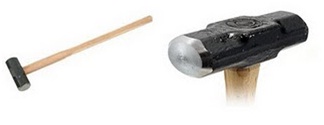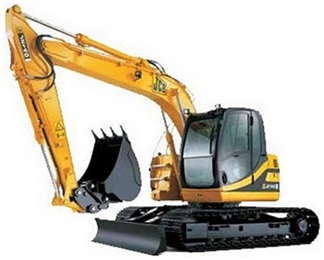Demolition Of Building
Published on Feb 14, 2016
Abstract
Demolition of a building means tearing down or falling down of a building with the help of equipments or explosives. This seminar report deals with how a demolition work is to be performed safely and also elaborates different steps involved before and during the execution of a demolition process.
The various steps involved before the demolition process includes surveying, removal of hazardous materials, preparation of demolition plan, stability report and the precautionary safety measures to be taken.
The main equipments used for these demolition activities are sledge hammer, excavators, bulldozers, wrecking balls etc. and main explosives used are dynamites and RDX. When explosive are used for the demolition, it is known as Implosion.
Safety measures
Training and Communication
Demolition workers, including plant or equipment operators, shall go through proper job safety training and be informed of the potential hazards by attending training sessions as well as on-the-job training. At present, the Construction Industry Training Authority has organized relevant training courses for site supervisors/foremen and plant or equipment operators.
Equipment Maintenance
All equipment shall be tested and examined before use. They shall be properly stored and maintained. The equipment shall be inspected daily and results of the inspection shall be recorded accordingly. A detailed safety instruction shall be provided to cater for specific situations of the project, if necessary.
Electrical Safety
A properly connected power source from a local electric utility supplier or a mobile electricity generator shall be utilized in demolition sites. The safety requirements given in the Factories and Industrial Undertakings (Electricity) Regulations shall be adhered to.
Fire
All flammable goods shall be removed from site unless they are necessary for the works involved. Any remaining flammable goods shall be stored in proper storage facilities. All furniture, timber, doors, etc. shall be removed before any welding work is performed. Fire fighting appliances shall be provided and maintained in working conditions. The Construction Site (Safety) Regulations require the contractor to maintain in good condition and free from defects all fire fighting appliances provided in such construction site.
Occupational Health
The health of workers on site shall be properly protected in accordance with the relevant subsidiary regulations of the Factories and Industrial Undertakings Ordinance and the Occupational Safety and Health Ordinance with particular attention to the following areas:
(A) Exposure to Dust;
(B) Chemical Exposure;
(C) Heat Stress and Ventilation;
(D) Noise Exposure;
(E) Medical and First Aid Facilities;
(F) Sanitation; and
(G) Occupational Diseases.
Preparation of plan
A Demolition Plan shall include the following:
(1) A plan showing:
(a) The location of the building to be demolished;
(b) A detailed topography of the site and its surrounds together with ground level contours and sections of the slopes and ground supported by the building where appropriate;
(c) Details of ground removal and/or backfilling; and
(d) The distances from the building to be demolished to its adjacent buildings, streets, structures and significant street furniture.
(2) A layout plan of all floors of the building to be demolished, with adequate sections, showing:
(a) The occupancy usage of the floors;
(b) The structural support systems;
(c) Principal materials of construction;
(d) The condition of the building e.g. the degree of deterioration; and
(e) The relationship of the building to be demolished with neighboring properties affected by the demolition, which include all adjoining buildings and unauthorized structures, shared staircases, party walls, truncating continuous frames, slopes, retaining wall, overhead cables, guy wires and underground utility services.
(3) A plan showing the structural arrangement and construction of all unconventional structural elements, such as prestressed concrete structures, precast concrete members, stressed skin structures, steel framed structures, hangers, hanging ties, trusses or Vierendeel girders, deep beams, long span beams (greater than 10m), arches, transfer plates, transfer girders, earth retaining or basement structures, buildings which also act as earth-retaining structures supporting adjacent ground, flat slabs, hollow block ribbed slabs and large cantilevered structures;
(4) A plan showing the procedure for the demolition of the building; detailed sequence of demolishing particular structural members; and the method of demolition to be adopted including the restrictions on the use of any particular type of equipment;
(5) In the case when powered mechanical plants and equipment are used, a plan showing the route of movement of powered mechanical plants and equipment including the method of lifting mechanical plant, where necessary, onto the top floors of the structure; any structural alterations required to suit the demolition, e.g. temporary strengthening to suit early removal of any ground floor/or cockloft structure to facilitate vehicular movement at ground floor, or strengthening of deteriorated key structural members; and any shoring, temporary supports and/or floor propping required;
(6) A plan showing all precautionary measures for the protection of the public including hoardings, covered walkways, catch platforms, catch fans, scaffolding, protective screens and safety nets;
(7) A plan showing the proposed shoring and precautionary measures for all affected adjacent buildings, slopes, retaining structures and services at each stage of the demolition works;
(8) A plan showing the proposed shoring and temporary support to be provided to the building to be demolished;
(9) A plan or descriptive notes on the proposed methods for handling and disposal of debris including
(a) The permissible temporary accumulation of building debris at upper floors and at ground floor;
(b) Method of handling demolished building debris;
(c) The routing and movement of debris from each floor to on grade holding area prior to leaving the site;
(d) Means of transportation of debris off the site;
(e) Time and frequency of debris disposal off site;
(f) Record scheme on the tonnage of each truck load, truck license plate, driver’s name, trip tickets and location of dump site;
(g) The site supervisory personnel responsible for the debris management system; and
(h) A temporary parking layout for mobile machines and trucks, if necessary
METHODS OF DEMOLITION
There are two types of demolition
1. Non explosive demolition
2. Explosive demolition.
4.1 Non explosive demolition
It means the demolition of a structure done with some equipment without the use of any explosive. Different equipments used for the demolition activity are
a. Sledge hammer
A sledge hammer, equipment used for removing a stone wall or a single column. It consists of a long stem with a metallic head. It is used to give impacts on the surfaces and that cause the demolition of structure. It cannot be used for removal of large buildings.

Fig 1. Sledge hammer
b. Excavators and Bulldozers

Fig 2. Excavator
Hydraulic excavators may be used to topple one-or two-story buildings by an undermining process. The undermining process means, erode the base or foundation, i.e., dig or excavate beneath the foundation so as to make it collapse. The strategy of excavation is to undermine the building while controlling the manner and direction in which it falls. The demolition project manager will determine where under mining is necessary so that the building is pulled into the desired manner and direction. Safety and cleanup considerations are also taken into account in determining how the building is undermined and ultimately demolished. Loaders or bulldozers may also be used to demolish a building. They are typically equipped with “rakes” (thick pieces of steel that could be an I-beam or tube) that are used to ram building wall. Skid loaders and Loaders will also be used to take material out and sort steel